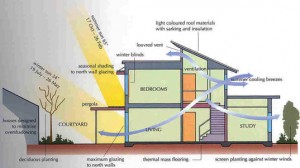Two things for you today.
Part 1: CNC Design
Among other things you will begin work on a new CNC V-Carve project. If you have not used V-Carve before, here are a few links to tutorials: Youtube and text version.
You will create a V-Carve sign that has a “cut-out” shape – not a simple square or rectangle, but a shape that follows the outline of the sign (like this: example 1, example 2, example 3). You can also make a sign that has a frame such as the one on the right in example 1.
Dimensions will be 12×18 (unless you have a special requirement for something larger). Start by deciding on a graphic or image for you sign and begin experimentation with V-Carve.
Machine time is limited so we will be producing these over the next few weeks while we also work on other projects.
Part 2: Workplace Health and Safety (E1.4)
You may already have a part time job or hope to get one, and it is likely that you will eventually finish school and enter the workforce.
It is important as an employee to know what your rights and responsibilities are regarding workplace health and safety.
Read the following and create a brief summary of the information, focusing on the three rights of workers. Why do you think that those rights are important? Can you think of an example when a worker might use one or more of those rights? If you are currently employed, did your employer make you aware of the rights that you have?
The Three Rights of Workers
The OHSA gives workers three important rights:
- The right to know about hazards in their work and get information, supervision and instruction to protect their health and safety on the job.
- The right to participate in identifying and solving health and safety problems or through a health and safety representative or worker member of a joint health and safety committee.
- The right to refuse work that they believe is dangerous to their health and safety or that of any other worker in the workplace.
The Right to Know
Workers have the right to know about any potential hazards to which they may be exposed in the workplace. The primary way that workers can become aware of hazards in the workplace is to be informed and instructed on how to protect their health and safety, including health and safety related to the use of machinery, equipment, working conditions, processes and hazardous substances.
The employer can enable the workers’ right to know in various ways, such as making sure they get:
- Information about the hazards in the work they are doing.
- Training to do the work in a healthy and safe way.
- Competent supervision to stay healthy and safe.
The Right to Participate
Workers have the right to be part of the process of identifying and resolving workplace health and safety concerns. This right is expressed through worker membership on joint health and safety committees or through worker health and safety representatives.
The Right to Refuse
Workers have the right to refuse work that they believe is dangerous to either their own health and safety or that of another worker in the workplace. For example, workers may refuse work if they believe their health and safety is endangered by any equipment they are to use or by the physical conditions of the workplace. Section 43 of the Act describes the exact process for refusing work and the responsibilities of the employer/supervisor in responding to such a refusal.
In certain circumstances, members of a joint health and safety committee who are “certified” have the right to stop work that is dangerous to any worker. Sections 45 – 47 of the Act sets out these circumstances and how the right to stop work can be exercised.
For more information, visit: http://www.labour.gov.on.ca/english/hs/pubs/ohsa/
